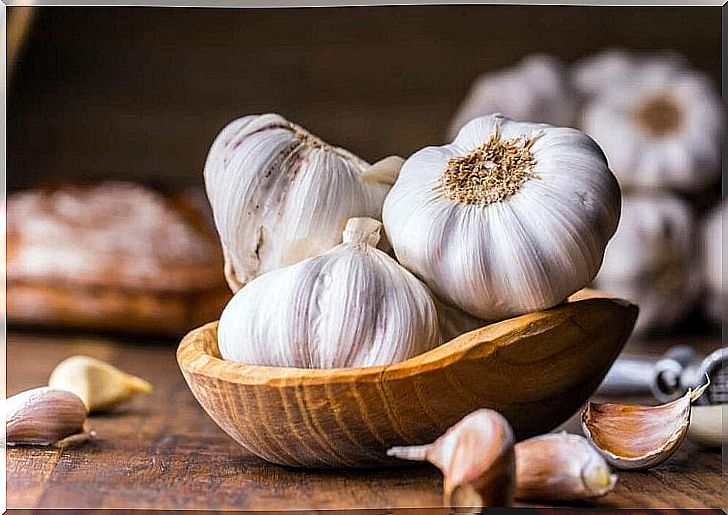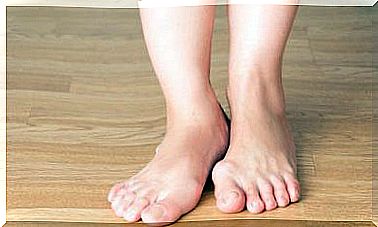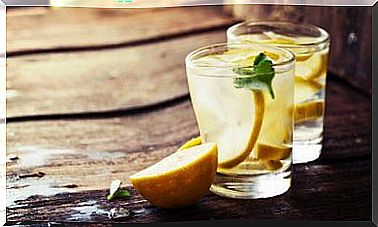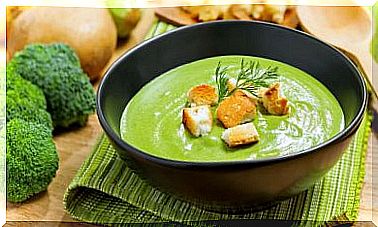Causes, Symptoms And Treatments Of Athlete’s Foot
Athlete’s foot like onychomycosis or nail fungus are contagious infections and can easily spread in locker rooms, gyms, beauty salons, swimming pools and collective showers. Find out all the causes and symptoms of athlete’s foot and how to treat this infection with natural remedies.

Athlete’s foot is a disease caused by a fungus or yeast infection, which usually appears between the toes of the feet.
In general, athlete’s foot can be spread by walking on contaminated surfaces. Very active people are more likely to be affected. The risk of fungal contamination is indeed multiplied in certain public places such as swimming pools, locker rooms and gymnasiums.
The fungus particularly attacks this area because the shoes create a hot and humid environment. Apart from the toes, athlete’s foot can also occur on the heels, palms of the hands, and between the fingers of the hands.
However, the infection can also spread to all parts of the body. Moreover, these skin infections are also more common in adolescents and adult men.
Find out in this article what are the causes of athlete’s foot, the most common symptoms but also powerful natural remedies to treat this infection.
Causes of athlete’s foot
Athlete’s foot is an infection caused by fungi or yeasts that like hot, humid environments.
For this reason, damp places (sports locker rooms, swimming pools, steam rooms, etc.) are environments conducive to their development, just like tight or plastic shoes which prevent the evacuation of sweat.
The origin of the name comes from athletes who are frequently affected by this infection. This is why the term athlete’s foot has become so popular.
Athlete’s foot is a contagious infection and can be spread through direct contact with shoes, socks, swimming pools or showers.
On the other hand, people whose family member has contracted athlete’s foot are more likely to be infected. There is therefore also a genetic predisposition to be affected by this disease, especially in the case of moccasin foot, a type of athlete’s foot which we will discuss later.
The risk of infection may increase when you wear closed- toe shoes but also if you keep your feet wet for a long period of time and if there is a lesion on the nails or on the skin.
Symptoms of athlete’s foot
The most common symptoms of athlete’s foot are:
- Dry, scale-like skin between the toes
- Inflammation
- Itching
- Bulbs
Great care should be taken, because if the fungus is found on the nails, it usually causes discoloration, thickening and even detachment of the nail.
The best way to prevent athlete’s foot and reduce the risk of this extremely contagious infection coming back is to adopt good hygiene measures.
To prevent infections caused by fungi such as athlete’s foot, specialists advise taking the following precautions:
- Wash your feet daily with soap and water.
- Keep feet dry after showering or bathing, especially between the fingers.
- Wear clean cotton socks and change them as many times as necessary to keep feet dry.
- Sandals are essential in public pools or showers. Choose athletic shoes that provide good ventilation. Remember to remove the sole and ventilate them after a session.
- Avoid wearing shoes without socks and prefer socks made of natural fibers (cotton or wool), which absorb moisture well. In case of hyper-sweating, do not hesitate to change socks during the day.
- Shoes should be well ventilated and preferably made from natural materials, such as leather.
- Apply talcum powder or antifungal powder to her feet or the inside of shoes to absorb moisture.
- Disinfect the bathroom and all your toiletries (towel, bath mat, washcloths, etc.) in the event of infection.
Types of athlete’s foot
There are three types of athlete’s feet:
- Interdigital: This is the most common type of athlete’s foot and it usually manifests between the smallest fingers. In addition, it can cause burning, itching and spread to the sole of the foot.
- Moccasin: This type of athlete’s foot can start with a little irritation, dryness, or itching. However, as it grows, the skin can eventually crack.
- Vesicular: this type is not very common and usually starts with blisters under the skin.
Complications of athlete’s foot
If the foot begins to swell, if it is hot to the touch, if there is pus or the fungus is spreading to the leg, you need to see the specialist. This is because in these cases the symptoms can be caused by more serious infections.
Home remedies to treat athlete’s foot
Garlic to treat athlete’s foot
Garlic has a compound called ajoene which acts as a natural antifungal and antibacterial agent. You can add a clove of garlic or 2 to your meals to speed up the healing process from any fungal infection, including athlete’s foot.
Option 1: Garlic infusion to treat athlete’s foot
Consuming a garlic infusion daily can help you fight fungus or yeast infection from the inside.
Ingredients
- 3 garlic cloves, crushed
- 1 cup of water (250 ml)
Preparation
- Heat the water with the three cloves of garlic.
- Once the boiling point is reached, turn off and let stand for 5-7 minutes then consume this garlic remedy.
You will be surprised to find that there are other very effective natural remedies for treating yeast infection. Also learn how to treat yeast infection with natural home remedies.
Option 2: olive oil and garlic to treat athlete’s foot
Ingredients
- 3 garlic cloves, finely crushed
- 3 drops of olive oil
Preparation
- Place the 3 finely crushed garlic cloves in a small bowl, add 3 drops of olive oil and stir well.
- Finally, you will apply this garlic remedy to the foot that has this infection.
Vinegar to treat athlete’s foot
The acidic property of vinegar helps to remove yeast infection and lower the alkalinity level of the skin, which inhibits the infection quickly.
The vinegar helps to remove excess moisture from the feet, and it also brings a significant acceleration in the healing process of athlete’s foot.
Ingredients
- 2 tablespoons of vinegar (30 ml)
Manual
- We apply apple vinegar to the foot that presents this condition with circular massages.
- It is important to let it dry well outside and to avoid using shoes for at least an hour.
Yogurt to treat athlete’s foot
Yogurt contains cultures of active bacteria which are very effective in fighting fungal infections, such as athlete’s foot.
The acidophilus-like bacteria found in natural yogurt help fight fungal and bacterial infections.
Ingredients
- 2 tablespoons of yogurt (30 ml)
Manual
- As in the previous case, you will apply the yogurt on the area affected by the fungus, and you will massage the area well so that the yogurt penetrates as much as possible.
- Leave it on for an hour and wash it off with plenty of water.
The catalog of home remedies for the feet offers us a wide variety of preparations to fight against yeast infections, remove dead cells and avoid other troublesome problems that harm them.
The use of shoes, continuous friction and their contact with many types of microorganisms can affect their skin, and over time, cause corns, cracks and some infections.
The lack of care and treatment can lead to more serious symptoms which, in addition to being unsightly, generate pain and inflammation.
In this article, we want to share with you an interesting recipe to start taking care of your feet with two ingredients. Find out how to get rid of yeast infection and corns with this amazing home remedy.









